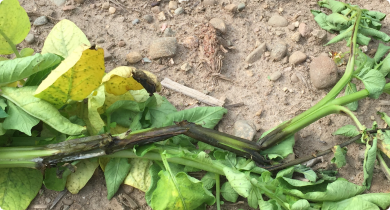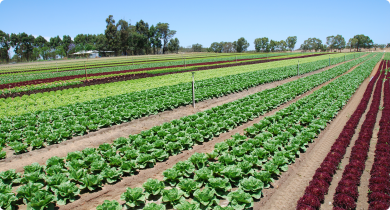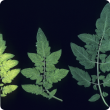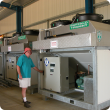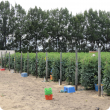Vegetables
The Department of Primary Industries and Regional Development works closely with the vegetable industry to promote growth through better market access, developing integrated pest management programs and improving water and fertiliser use efficiency.
Vegetable production in Western Australia had a farm gate value of about $336 million in 2013, with the total industry value being $909 million. Most crops are grown for local consumption, apart from carrots, which are exported year-round to South East Asia and the Middle East.
The main growing areas are in the South-West, especially the Swan Coastal Plain from Gingin to Busselton, and around Manjimup and Albany.
Filter by search
Filter by topic
- (-) Remove Production & postharvest filter Production & postharvest
- Plant nutrition (15) Apply Plant nutrition filter
- Potatoes (10) Apply Potatoes filter
- Fertiliser (10) Apply Fertiliser filter
- Irrigation (8) Apply Irrigation filter
- Climate, land & water (8) Apply Climate, land & water filter
- Water (7) Apply Water filter
- Water management (6) Apply Water management filter
- Postharvest (6) Apply Postharvest filter
- Broccoli (6) Apply Broccoli filter
- Fruit (5) Apply Fruit filter
- Cauliflower (4) Apply Cauliflower filter
- Carrots (3) Apply Carrots filter
- Pests, weeds & diseases (3) Apply Pests, weeds & diseases filter
- Cabbage (3) Apply Cabbage filter
- Breeding & varieties (3) Apply Breeding & varieties filter
- Nursery & cutflowers (2) Apply Nursery & cutflowers filter
- Sowing (2) Apply Sowing filter
- Lettuce (2) Apply Lettuce filter
- Celery (2) Apply Celery filter
- Diseases (2) Apply Diseases filter
- Pests (1) Apply Pests filter
- Pest insects (1) Apply Pest insects filter
- Pumpkin (1) Apply Pumpkin filter
- Soils (1) Apply Soils filter
- Tomatoes (1) Apply Tomatoes filter
- Strawberries (1) Apply Strawberries filter
- Pastures (1) Apply Pastures filter
- Soil productivity (1) Apply Soil productivity filter
- Harvesting (1) Apply Harvesting filter
- Chinese cabbage (1) Apply Chinese cabbage filter
- Brussels sprouts (1) Apply Brussels sprouts filter
- Beans (1) Apply Beans filter
- Food & beverages (1) Apply Food & beverages filter
- Food, export & investment (1) Apply Food, export & investment filter
- Grapes & wine (1) Apply Grapes & wine filter
- Garlic (1) Apply Garlic filter
- Pasture management (1) Apply Pasture management filter

